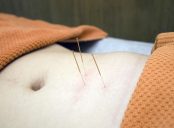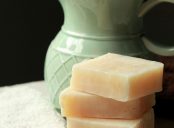Diet Fiber: The Key to a Healthy Lifestyle

Introduction
In today’s health-conscious society, diet fiber has gained significant attention for its potential benefits in maintaining a healthy lifestyle. From aiding digestion to managing weight, diet fiber has become a popular topic in nutrition discussions. This comprehensive article aims to provide an in-depth understanding of diet fiber, exploring its various types, quantifying its effects, comparing different sources, and delving into its historical advantages and disadvantages.
Overview of Diet Fiber

Diet fiber, also known as dietary fiber or roughage, refers to the indigestible carbohydrates found in plants. Unlike other nutrients, such as proteins or fats, fiber passes through the digestive system relatively intact. This unique characteristic makes it an essential component in maintaining a healthy diet. Consuming an adequate amount of fiber can promote regular bowel movements, regulate blood sugar levels, lower cholesterol, and aid in weight management.
Types of Diet Fiber
There are two main types of diet fiber: soluble and insoluble fiber. Soluble fiber dissolves in water and forms a gel-like substance in the intestines. This type of fiber can be found in fruits, vegetables, legumes, and oats. Insoluble fiber, on the other hand, does not dissolve in water and adds bulk to the stool. Whole grains, nuts, and seeds are excellent sources of insoluble fiber. Both types of fiber are important for maintaining a healthy digestive system.
Quantifying the Effects of Diet Fiber
Research has shown that consuming an adequate amount of diet fiber can have numerous health benefits. For instance, studies suggest that a high-fiber diet may help prevent conditions like constipation, diverticulitis, heart disease, and type 2 diabetes. Furthermore, fiber-rich foods tend to be more filling, leading to reduced calorie intake and potential weight loss. It is recommended that adults consume between 25 to 30 grams of fiber per day for optimal health benefits.
Differences Between Different Types of Diet Fiber
While all types of diet fiber offer health benefits, soluble and insoluble fibers have distinct characteristics. Soluble fiber has been shown to help lower LDL cholesterol levels, control blood sugar levels, and promote a healthy gut microbiome. On the other hand, insoluble fiber adds bulk to the stool, aiding in regular bowel movements and preventing constipation. Understanding these differences can help individuals tailor their diet to their specific needs.
Historical Advantages and Disadvantages of Diet Fiber
Throughout history, the consumption of diet fiber has had its advantages and disadvantages. Traditional diets, rich in whole grains, fruits, and vegetables, naturally provided an abundance of fiber. These diets were associated with lower rates of chronic diseases and improved overall health. However, with the rise of processed foods and a shift towards a Western diet, fiber intake has significantly decreased. This decline has contributed to an increase in chronic conditions such as obesity and heart disease. Recognizing the importance of fiber in our diets and making conscious efforts to increase its intake can help modern individuals combat these health concerns.
Conclusion
In conclusion, diet fiber plays a crucial role in maintaining a healthy lifestyle. Its ability to promote digestive health, regulate blood sugar levels, and aid in weight management makes it an essential component of a balanced diet. By understanding the different types of fiber, quantifying its effects, and recognizing historical advantages and disadvantages, individuals can make informed decisions about their dietary choices. Incorporating fiber-rich foods into daily meals can lead to improved overall well-being and better long-term health outcomes.
References:
1. Mayo Clinic. (2017). Dietary fiber: Essential for a healthy diet. Retrieved from https://www.mayoclinic.org/healthy-lifestyle/nutrition-and-healthy-eating/in-depth/fiber/art-20043983
2. National Institutes of Health. (2021). Dietary fiber. Retrieved from https://ods.od.nih.gov/factsheets/Fiber-HealthProfessional/





















